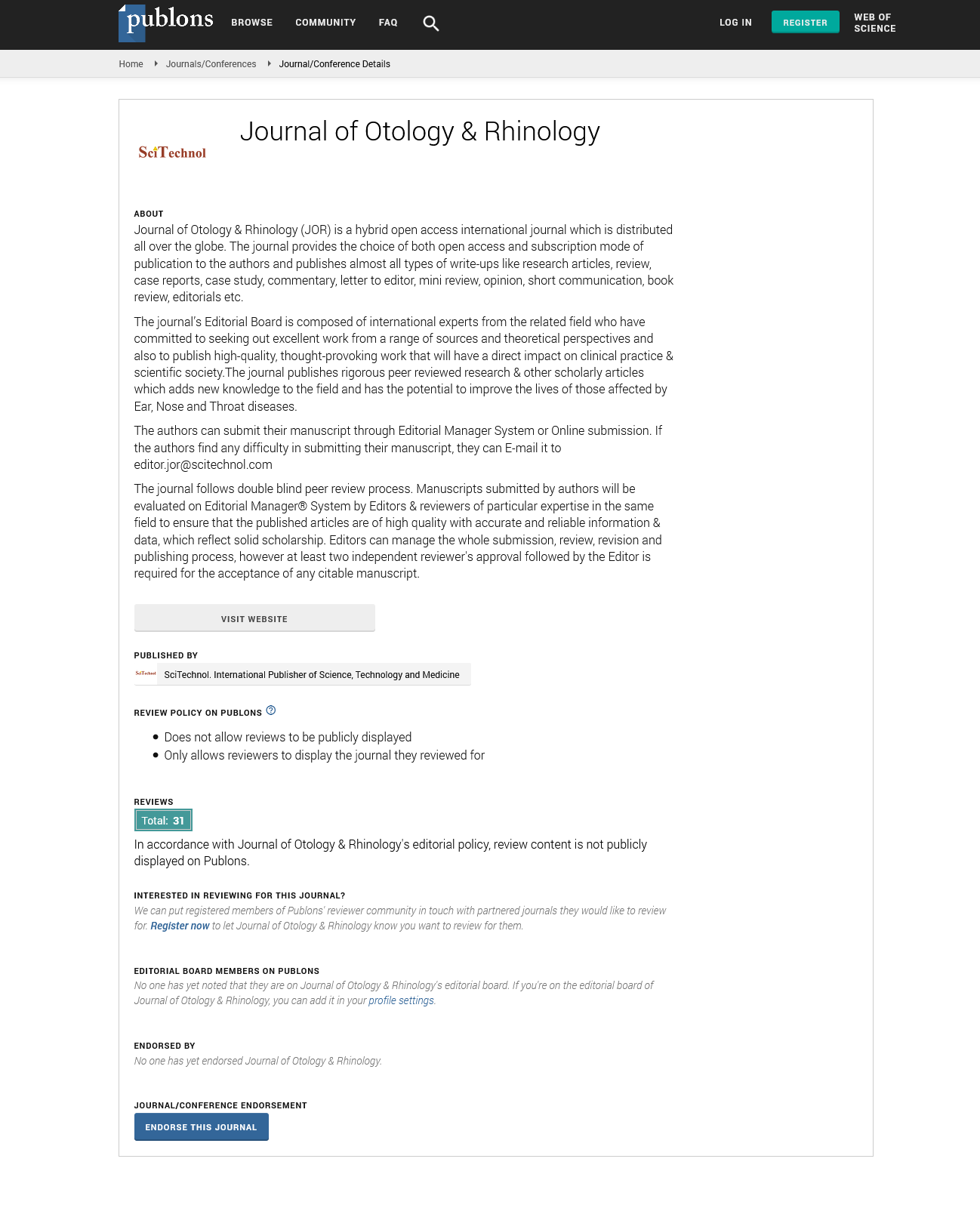Research Article, J Otol Rhinol Vol: 7 Issue: 2
The Role of Transoral Oropharyngectomy in the Management of Oropharyngeal Cancers
Giridharan Wijayasingam1*, Richard Wei Chern Gan2, Kishan Ubayasiri3, Karan Jolly1, Sean Mortimore4 and Mriganka De5
1ENT Specialty Registrar, Russels Hall Hospital, West Midlands, UK
2ENT Specialty Registrar, Wakefield General Hospital, UK
3ENT Interface Head and Neck Fellow, University Hospital Birmingham Foundation NHS Trust, UK
4Consultant ENT and Head and Neck Surgeon, Royal Derby Teaching Hospital NHS Foundation Trust, UK
5Consultant ENT and Head and Neck Surgeon, University Hospital Birmingham NHS Foundation Trust, UK and Heart of England NHS FoundationTrust, UK
*Corresponding Author : Giridharan Wijayasingam
Locum Consultant ENT Surgeon, Russels Hall Hospital, West Midlands, Address, 102, Kingston Avenue, North Cheam, Surrey, SM3 9UF, UK
E-mail: giri85@hotmail.com
Received: November 09, 2017 Accepted: February 09, 2018 Published: February 13, 2018
Citation: Wijayasingam G, Gan RWC, Ubayasiri K, Jolly K, Mortimore S, De M, et al. (2018) The Role of Transoral Oropharyngectomy in the Management of Oropharyngeal Cancers. J Otol Rhinol 7:2. doi: 10.4172/2324-8785.1000342
Abstract
The incidence of oropharyngeal carcinoma is increasing as a result of increasing Human Papilloma Virus (HPV subtypes 16 and 18) infection of the oropharynx. 31 patients with oropharyngeal squamous cell carcinoma were treated in a university teaching hospital. The primary cancer was resected by either transoral laser microsurgery or transoral robotic surgery. Patients underwent simultaneous neck dissection when indicated. The Multidisciplinary Team (MDT) decided whether patients required postoperative radiotherapy/ chemoradiotherapy depending on tumour and patient factors. Survival was analyzed using a Kaplan-Meier estimator. The results were discussed alongside a literature search on oropharyngeal carcinoma management. 87.4% patients were disease free at 1 year, and 77.2 % at both 3 and 5 years. Overall survival at 1 year was 92% and 76.4% at both 3 and 5 years.
 Spanish
Spanish  Chinese
Chinese  Russian
Russian  German
German  French
French  Japanese
Japanese  Portuguese
Portuguese  Hindi
Hindi 


